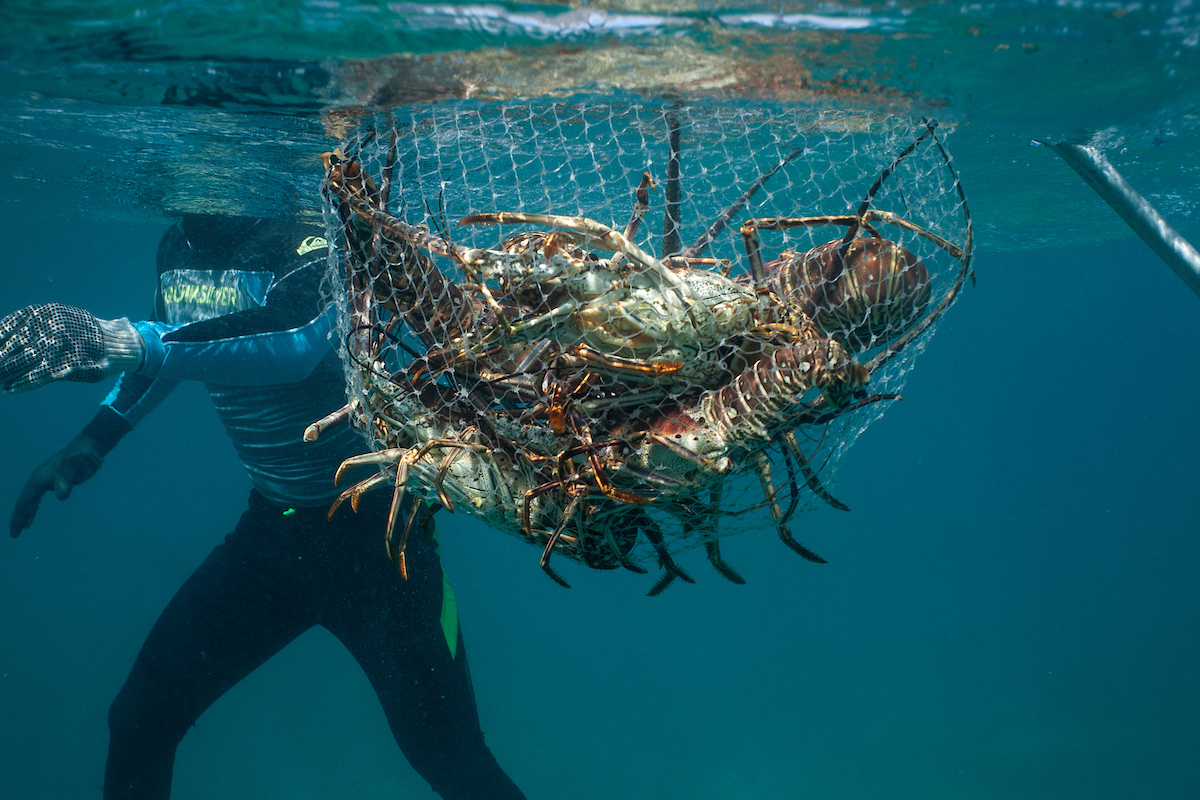
The Lobster Wars
for bioGraphicStory by Erik Vance
Photographs by Dominic Bracco
In the summer of 2014, the Florida lobster fishing community was at a near boiling point. For more than a decade, commercial divers and trappers here had been at each other’s throats. Public fishery policy meetings—normally staid affairs—had devolved into shouting matches. There were accusations of intimidation, vandalism, and, worst of all, lobster theft. Almost a dozen fishermen were sent to federal prison.
It all centered around a simple thing: a small underwater structure called a lobster house. More commonly known by its Spanish name, a “casita” is an artificial structure that provides shelter on the ocean floor. Casitas are not traps—lobsters can come and go as they please—but they make the animals easy picking for divers. Caribbean spiny lobsters (Panulirus argus), unlike their quarrelsome New England cousins (Homarus americanus), are highly social, preferring to huddle together in crevices and under coral heads. If you drop an old refrigerator in the water and wait for a month, there’s a good chance you’ll find it crawling with lobsters. Casitas are so effective that a single one can attract about as many lobsters in a season as six traditional traps, and much faster. Often, though, these shade structures are little more than trash tossed on the ocean floor—car hoods, sheets of corrugated metal, anything that casts a shadow—and that fact has been a source of conflict.
In 2014, trap fishermen, who catch lobsters using wood and wire boxes with one-way doors, argued that casitas were simply junk piles. Commercial divers, who dive and catch lobsters by hand on the ocean floor, insisted that diving the casitas was more sustainable than fishing with traps. Studies were done; media stories circulated for years. In the end, the National Oceanic and Atmospheric Administration (NOAA) and the Florida Fish and Wildlife Conservation Commission sided with the trappers and began cracking down on casita divers.
Today if you talk to lobstermen in the Keys, which hold 80 percent of America’s spiny lobsters, they will tell you that the great casita debate is ancient history—a necessary step to cleaning up our cluttered oceans. But in the intervening years, a strange thing has happened. While the U.S. banned casitas, almost all of the other Caribbean countries embraced them. Mexico, Cuba, the Bahamas, Belize and many others prefer them.
And NGOs like The Nature Conservancy now widely advocate for casitas as a way to protect coral reefs—and to and avoid the tragic diving accidents that have crippled or killed thousands of Central American lobster divers as poor fishermen hunt for every last lobster in their waters to feed demand from the U.S. and China.
Across the Caribbean, lobster populations have see-sawed for decades. In some places, they seem robust, while in others overfishing and disease have decimated them. Lobsters are the most economically important species in the region, so lobster-fishing policies quickly ripple across coastal ecosystems and economies. Finding sustainable fishing practices will determine the future of these coastal communities.
“The wonderful thing about the casitas—and why we promote casitas over traps—is that they allow the lobsters to come and go,” says Julie Robinson, a fisheries manager with The Nature Conservancy who works in Belize and has followed the debate for years. After all the work Robinson has done studying various methods, she has come to one conclusion: “The casitas are still more sustainable.”
Except in Florida, where they are illegal.
(For the full story, click here)